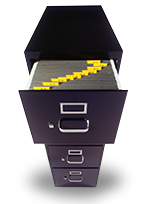The Treasury Inspector General for Tax Administration (TIGTA) has indicated it is making significant progress in its investigation of the IRS impersonation scams that are sweeping the nation, causing reported taxpayer losses of more than $36 million and averaging more than $5,700 per taxpayer. To date, TIGTA has logged approximately 1.2 million calls reported by taxpayers, and nearly 6,400 people have reported that IRS impersonators have fleeced them.
In one instance, a taxpayer was so convinced the scammer was an IRS agent he rushed off to make a payment and was involved in a traffic accident. He was so worried about the scammer’s threats of legal action that he actually left the scene of the accident so he could promptly get the funds wired to the scammer. In this case TIGTA was able to trace the victim’s wire transfer and ultimately nabbed a ring of five scammers.
But these stories generally don’t have happy endings, so it is important for everyone to understand that the IRS never demands payment by wire, MoneyGram, debit cards or the like, and it always makes initial contact by mail.
Protect Yourself and Loved Ones from Being a Scam Victim:
Protect Against Identity Theft – In addition to scammers, watch out for those ID thieves out there looking for vulnerable IDs to steal. You may think it will never happen to you, but if it does, it will become a nightmare and could take years to straighten out. So you need to protect yourself against ID theft by limiting the exposure of your personal and financial information as much as possible.
What do ID thieves need to create havoc for you? Your name, Social Security number and birth date! Here are some tips to limit your ID exposure:
Use common sense and follow the “need-to-know” rule when disclosing your financial information. Careless safeguarding of your information can lead to big problems.
Think Your ID Has Been Compromised? You should immediately:
You should also contact this office immediately so steps can be taken to avoid fraudulent returns being filed using your SSN. Even if someone has already e-filed a return and claimed a refund under your SSN, your refund may still be safe.
However, you cannot e-file and instead must file a paper return with the proper documentation; you will ultimately receive the refund you are due, but it will be severely delayed. Once the IRS recognizes that your SSN was used to file a fraudulent return, it will block your SSN from filing and assign you an alternative filing number for the subsequent year.
For more information on how and what to file when someone else has filed using your SSN, please contact this office.
Thursday, June 16, 2016
Thursday, June 9, 2016
Tax Breaks for Hiring Your Children in Your Family Business
Tax Breaks for Hiring Your Children in Your Family Business
Article Highlights:
- Child Under the Age of 19 or a Student Under the Age of 24
- Kiddie Tax
- Tax on a Child’s Earned Income
- Deduction for the Business
- Employment Taxes
- IRAs and Retirement Plans
Rather than helping to support your children with your after-tax dollars, you can instead hire them in your business and pay them with tax-deductible dollars. Of course, the employment must be legitimate and the pay commensurate with the hours and the job worked. The following are typical situations encountered when hiring family members.
Employing a Child – A reasonable salary paid to a child reduces the self-employment income and tax of the parents (business owners) by shifting income to the child. When a child under the age of 19 or a student under the age of 24 is claimed as a dependent of the parents, the child is generally subject to the kiddie tax rules if their investment income is upward of $2,100. Under these rules, the child’s investment income is taxed at the same rate as the parent’s top marginal rate using a lower $1,050 standard deduction. However, earned income (income from working) is taxed at the child’s marginal rate, and the earned income is reduced by the lesser of the earned income plus $350 or the regular standard deduction for the year, which is $6,300 for 2016. Assuming that a child has no other income, the child could be paid $6,300 and incur no income tax. If the child is paid more, the next $9,275 he or she earns is taxed at 10%.
Example: You are in the 25% tax bracket and own an unincorporated business. You hire your child (who has no investment income) and pay the child $11,800 for the year. You reduce your income by $11,800, which saves you $2,950 of income tax (25% of $11,800), and your child has a taxable income of $5,500, $11,800 less the $6,300 standard deduction) on which the tax is $550 (10% of $5,500).
If the business is unincorporated and the wages are paid to a child under age 18, he or she will not be subject to FICA – Social Security and Hospital Insurance (HI, aka Medicare) – taxes since employment for FICA tax purposes doesn’t include services performed by a child under the age of 18 while employed by a parent. Thus, the child will not be required to pay the employee’s share of the FICA taxes, and the business won’t have to pay its half either. In addition, by paying the child and thus reducing the business’s net income, the parent’s self-employment tax payable on net self-employment income is also reduced.
Use the same example from above. Assuming your business profits are $130,000, by paying your child $11,800, you not only reduce your self-employment income for income tax purposes, but you also reduce your self-employment tax (HI portion) by $316 (2.9% of $11,800 times the SE factor of 92.35%). But if your net profits for the year were less than the maximum SE income ($118,500 for 2016) that is subject to Social Security tax, then the savings would include the 12.4% Social Security portion in addition to the 2.9% HI portion.
A similar but more liberal exemption applies for FUTA, which exempts from federal unemployment tax the earnings paid to a child under age 21 while employed by his or her parent. The FICA and FUTA exemptions also apply if a child is employed by a partnership consisting solely of his parents. However, the exemptions do not apply to businesses that are incorporated or a partnership that includes non-parent partners. Even so, there's no extra cost to your business if you're paying a child for work that you would pay someone else to do anyway.
Retirement Plan Savings - Additional savings are possible if the child is paid more (or works part-time past the summer) and deposits the extra earnings into a traditional IRA. For 2016, the child can make a tax-deductible contribution of up to $5,500 to his or her own IRA. The business also may be able to provide the child with retirement plan benefits, depending on the type of plan it uses and its terms, the child's age, and the number of hours worked. By combining the standard deduction ($6,300) and the maximum deductible IRA contribution ($5,500) for 2016, a child could earn $11,800 of wages and pay no income tax.
However, referring back to our original example, the child’s tax to be saved by making a $5,500 traditional IRA contribution is only $550, so it might be appropriate to make a Roth IRA contribution instead, especially since the child has so many years before retirement and the future tax-free retirement benefits will far outweigh the current $550 savings.
If you have questions about the information provided here and other possible tax benefits or issues related to hiring your child, please give this office a call.
Wednesday, June 1, 2016
June 2016 Letter
This month's newsletter discusses the recent federal rule changes impacting salaried employees who will be entitled to overtime pay in late 2016. There is also information to help protect a recently departed loved one's identity from being stolen. These articles, plus recent announcements from the IRS regarding audit rates, and new Health Savings Account (HSA) limits for 2017 round out this month's newsletter.
Should you know of someone who may benefit from this information please feel free to forward this newsletter to them.
Should you know of someone who may benefit from this information please feel free to forward this newsletter to them.
New Overtime Rules
Employer and employee alert
On May 18, 2016 President Obama and Labor Secretary Perez announced new Department of Labor overtime regulations that go into place December 1, 2016. The Federal Labor Standards Act (FLSA) has information everyone needs to know to comply with these new rules.
The changes
What this means to you
| |||||||||||||||||||||||||||||||||||||||
The Chances of Being Audited
2015 audit statistics show continued changes
What are the Chances?
Every year the IRS publishes the statistics on the number of tax returns they are examining. Provided here are the last three years of published information and a look back to 2008 to see any trends:
Observations:
Having good records
| |||||||||||||||||||||||||||||||||||||||||||||||||||||||||||||||||||||||||||||||||||||
2017 Health Savings Account Limits Announced
The limits
Source: IRS Rev Proc 2016-28
Note: To qualify for an HSA you must have a qualified High Deductible Health Plan (HDHP). A plan must meet minimum deductible requirements that are typically higher than traditional health insurance. In addition, your coverage must have reasonable out-of-pocket payment limits as set by the above noted maximums.Not sure what an HSA is all about? Check with your employer. If they offer this option in their health care benefits, they will have information discussing the program and its potential benefits. | |||||||||||||||||||||||||||||||||||||||||||
As always, should you have any questions or concerns regarding your situation please feel free to call.
|
Subscribe to:
Comments (Atom)

















